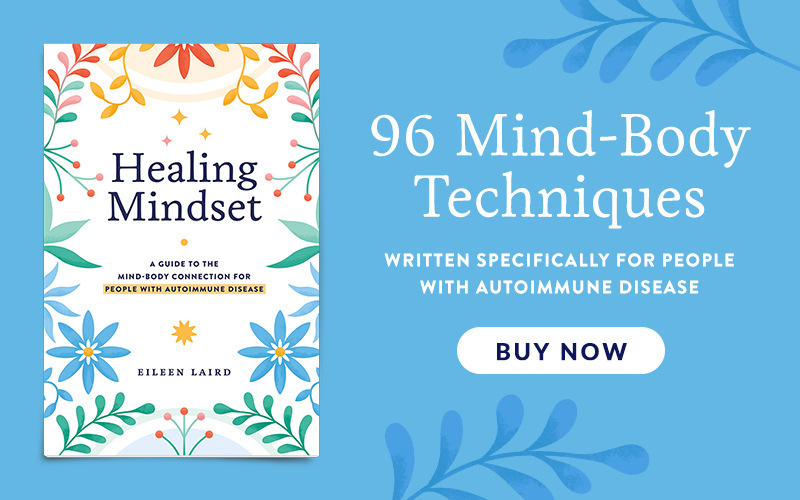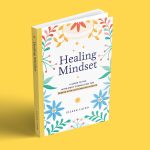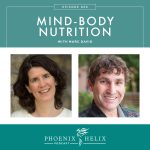
“Nourishment is not just “nutrition.” Nourishment is the nutrients in the food, the taste, the aroma, the ambiance of the room, the conversation at the table, the love and inspiration in the cooking, and the joy of the entire eating experience.”
~ Marc David
The Short Answer Is Yes
Here’s something you may not know: Digestion actually starts in the brain. Our brain releases saliva, pancreatic enzymes, and stomach acid as soon as we start thinking about food, even before we take our first bite. This is why we’ll often say that a beautiful food photo (or the smell of bacon) is “mouthwatering.” This is how our bodies are designed to work. But what if we’re stressed and distracted when we eat? Then this step is skipped. We start chewing food before our body is ready, and this makes it harder to fully digest the food. This can increase food intolerance, and also cause uncomfortable gastrointestinal symptoms after a meal.
Stress also impacts digestion a second way. The autonomic branch of our nervous system governs important body functions like heart rate and digestion. Stress causes this system to shift into a fight/flight/freeze response because the body interprets stress as a threat. Our brain then suppresses body processes that aren’t immediately necessary for survival (like digestion) and shifts resources to things that will help us run or fight if needed. Chronic stress can chronically suppress digestion.
The good news is that we can interrupt this stress effect before we eat, and replace it with a relaxation response that supports digestion instead.
The Connection Between Digestion and Autoimmune Health
Intestinal permeability (also known as leaky gut) is one of the root causes of autoimmune disease. Autoimmunity also exacerbates leaky gut, creating a vicious cycle. So, what is leaky gut? The intestinal lining is designed to prevent harmful things from getting into our bloodstream, while allowing beneficial nutrients through. With leaky gut, the cell junctions are little too wide, so they let things into the bloodstream that shouldn’t be there which can trigger an inflammatory response.
With healthy digestion, all food is broken down to the amino acid level, and those amino acids are allowed through the intestinal wall and become building blocks that our bodies need. Impaired digestion combined with leaky gut, allows proteins to slip through before they are broken down into amino acids. Our body doesn’t identify these as food, but sees them as foreign invaders instead, activating an immune response. The result is increased food intolerance and autoimmune activity.
The good news is that leaky gut isn’t necessarily a permanent state. It’s dynamic – the space of the intestinal cell junctions fluctuate. There are things that make it worse, and things that make it better. Stress is one of the things that makes it worse. Relaxation is one of the things that makes it better.
It’s also important to consider the impact of nutrition on autoimmune disease. The foundation of a healing diet is nutrient density, but that only applies to nutrients that our bodies can actually use. When digestion is impaired, we miss a lot of the nutrition that our food contains. We aren’t what we eat – we are what we eat, digest, and absorb. To live our healthiest lives with autoimmune disease, we need nutrients. Nutrient deficiencies interfere with our ability to heal.
3 Steps to Mindful Eating
Mindful eating is the practice of being fully present when we eat. Instead of multi-tasking, we focus on the food.
- Step 1: Relax: Close your eyes and pause for a few seconds before taking your first bite. If deep breathing is comfortable for you, take a few slow, deep breaths. That accesses the relaxation response quickly. Step out of the rushed pace of your day to slow down in this moment.
- Step 2: Access Your Senses: Now open your eyes and look at your food, noticing the colors and textures. What does the food smell like? What do you hear? When you’re ready to take your first bite, pay attention to the feeling of the food in your mouth before you start to chew. What’s the taste, temperature, and texture? As you start chewing, how does that change? What flavors burst forth? Eat slowly, and give the food your full attention.
- Step 3: Enjoy Eating: Being fully present when we eat not only optimizes digestion, but can also deepen the joy we get from a meal. Have you ever eaten dinner while doing something else and been surprised when your plate was empty? I know I have! This is the opposite experience. It’s the practice of savoring every bite.
Barriers to Mindful Eating
- Smartphones: Smartphones aren’t 100% to blame for mindless eating. After all, 50 years ago people sometimes ate in their cars, at their desks, or in front of the TV. But it wasn’t every meal. Smartphones make is so easy to distract ourselves, and they aren’t relaxing devices. Instead, they often create background anxiety with constant notifications and input of information. Our brains weren’t designed for constant input. We’re supposed to let our minds drift sometimes. This is when we process and integrate information. It’s vital to problem solving, creativity, emotional processing, and more.
- Internal Resistance: Even though mindful eating can be a beautiful and enjoyable experience, it’s a new habit, and the brain resists change. The good news is that over time, we can rewire our brains to new habits. Mindful eating can become what your brain prefers, and the fact that it’s an enjoyable experience makes habit change easier.
- Self-Judgment: While mindful eating can be very enjoyable, there is a potential side effect that’s not enjoyable at all. When we stop distracting our minds and focus on one thing, the voices in our head that were buried in the background can suddenly move to the foreground, and sometimes those voices aren’t nice. They might criticize you for taking time to relax during a busy day, calling you lazy or selfish or unproductive. They might criticize your food choices, saying you’re a bad cook, or you don’t deserve to eat delicious food, or that you eat too much. These can be painful voices to hear, but it comes with a benefit. When we become aware of negative self-talk, we can start to change it. Dr. Shainna Ali, author of the Self-Love Workbook, calls this voice your inner bully, but there are ways to nurture an inner friend.
- Perfectionism: Sometimes we set our goals so high that it stops us from even trying to accomplish them. The practice of mindful eating doesn’t need to be done for every bite of every meal in order to be beneficial. Maybe you enjoy reading at dinner or watching TV and don’t want to give that up completely. Set yourself a smaller goal. The first bite is actually the most important one. If you practice mindful eating for that bite, it accesses the relaxation response that kicks off the digestion process. And if you can also do it for the last bite, that ends your meal with mindful digestive support as well. Bookend your meals with mindfulness, and see how you like it. You can always add more mindful eating over time.
You May Also Be Interested In
Credit: image at top of page purchased from iStock.









